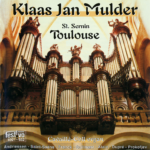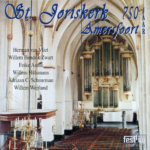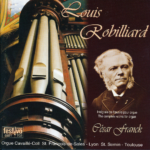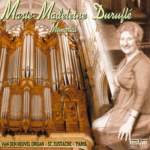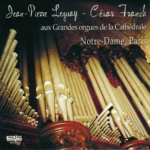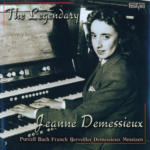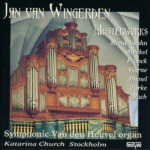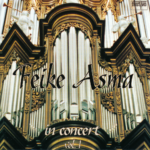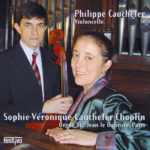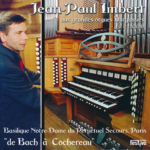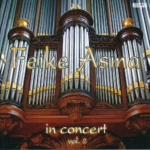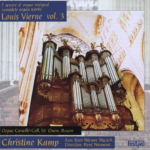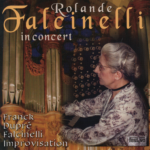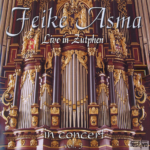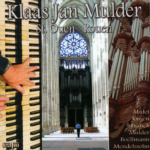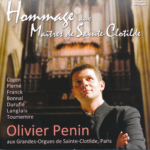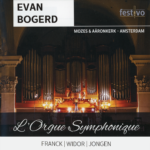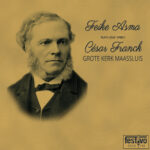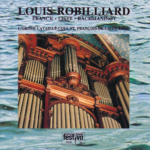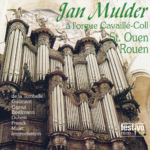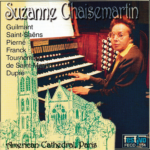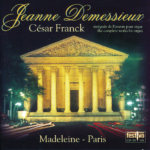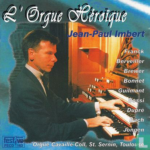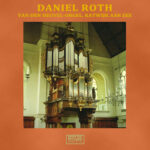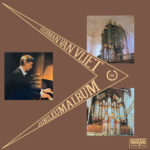César Franck
César Franck (1822-1890). Even though he was born in Liège, and as such of Belgian origin, César-Auguste Franck may be counted among the great French composers. His works ‘pour grand orgue’ make him undoubtedly the most important French composer of organ music ever. César Franck’s parents, originating from a German-Austrian family, moved from Aachen to Liège in 1821. The musically gifted César and his brother Joseph were commended to the care of the teacher Louis Joseph Daussoigne-Méhul at the Liège Conservatoire. At the early age of twelve, César had two prizes on his name. His overly proud father imagined his children performing as prodigies on stage: César as a pianist and Joseph as a violinist. In 1835 the family moved to Paris. Surely, the famous Conservatoire of the French capital would allow the children to build their careers! César, however, was too young to be admitted.
Another teacher was found for him in the person of composer Anton Reicha, but in 1837 the doors of the Conservatoire eventually opened up for him. César could join the composition class of Aimé Leborne, the piano class of Pierre Zimmerman and, three years later, also the organ class of François Benoist. One of the prizes obtained during his studies he achieved by transposing a fugue at sight a third lower.
In 1842 he left the Conservatoire. His father Nicolas-Joseph still had a career as a soloist in mind for him, but César preferred to devote himself to composing, for which the function of organist could serve as a base. In addition he earned a living by teaching; in 1872 he succeeded Benoist as professor of organ at the Paris Conservatoire and educated a whole generation of organists and composers, including d’Indy, Chausson, Duparc, Pierné, Vierne and Tournemire.
Franck was first the organist of the Notre-Dame de Lorette in Paris and then of the church of Saint-Jean-Saint-François in the Marais district. On this organ, built by Aristide Cavaillé-Coll, Franck remarked: ‘It is an orchestra.’ He must have said the same of the instrument which awaited him in 1858, the brand new organ in the Sainte-Clotilde of the same organ builder. Franck was to play this instrument for over thirty years. The organ inspired him to write a number of sublime compositions, which together form a milestone in the history of organ music.
His contemporary Franz Liszt made no secret of his admiration: ‘These poetic pieces clearly take a prominent place alongside the masterworks of Johann Sebastian Bach.’ Liszt was among the audience when Franck performed his Six pièces pour grand Orgue on 13 April 1862. Franck had worked on these six pieces from 1860 to 1862, the Fantaisie en Ut, Grande Pièce symphonique, Prélude, Fugue et Variation, Pastorale, Prière and Final respectively. These pieces marked a whole new style of organ composition, the symphonic style which clearly developed under the influence of Cavaillé-Coll’s symphonic organ genre. However, it should not be forgotten that Franck was also the first to draw a clear dividing-line between organ and orchestra, knowing both inside out.
‘The first Romantic organ sonata’, Franck’s student Charles Tournemire called his teacher’s Grande Pièce symphonique. Even the title indicates that the composer intended to create a monumental organ piece comparable to a symphony for orchestra. Its structure is that of a four-movement sonata. The introduction is a moving Andantino serioso in which two themes are presented: one melodic, the other hymn-like. A crescendo announces the Allegro non troppo e maestoso, written in sonata form. The first of the two themes has an heroic character. From the second theme a tender, four-part, chorale-like melody arises. The third movement, Andante, is also characterized by a beautiful melody, with a scherzo in the centre. The introduction of the Final is made up of a combination of themes from the preceding movements. An impressive crescendo follows, while this final movement is developing along the powerful motto of the Allegro ma non troppo. The same theme serves a fugue, with a picturesque coda concluding the piece.
In addition to twelve major organ works, César Franck wrote an elegant Andantino in 1856. It was quite popular from the very beginning, as it was published several times after its first edition in 1857. Franck, who wrote the piece in ABA form, reminisces around the theme in a lovely coda, as if he was not able to tear away from it.
